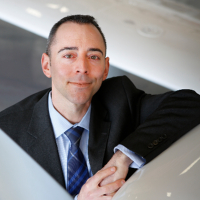FAR 61.113 is the regulation governing private pilot privileges and limitations. In addition to applying to the holders of private pilot certificates, it also applies to holders of higher certificates like commercial or airline transport pilot certificates when exercising private pilot privileges. FAR 61.113(a) lays out the general prohibition on private pilots engaging in flights that are for hire or involve compensation. There are several exceptions to that rule, and they are listed in FAR 61.113(b) - (h). FAR 61.113(c) is the commonly used exception for sharing costs with passengers.
That regulation is relatively short at only 33 words: “A private pilot may not pay less than the pro rata share of the operating expenses of a flight with passengers, provided the expenses involve only fuel, oil, airport expenditures, or rental fees.” AOPA’s Legal Services Plan regularly receives a high volume of calls from members trying to understand how that regulation applies to their operations. From the number of calls received and the variety of questions asked, it is evident that the regulation is commonly misunderstood, or at least that it is not well understood.
When assessing the propriety of flights proposed to be conducted under FAR 61.113(c), it is often necessary to go beyond the text of the regulation itself and consult one or more of the many legal interpretations FAA’s Office of the Chief Counsel has issued over the course of several decades. A notable feature of the AC is that it distills guidance from numerous legal interpretations, as well as some case law, into a single document. Therefore it is unsurprising that the resulting AC is 12 pages long and does not seem like overkill. That’s more than can be covered in a single article, so stay tuned for additional articles unpacking the AC’s guidance.
The AC includes helpful definitions for terms like compensation (“Receipt of anything of value that is contingent upon the pilot acting as pilot in command (PIC) of an aircraft") that are not defined in the FARs. As a starting point, it is important to understand that pro-rata cost sharing is considered compensation. It is permissible for pilots exercising private pilot privileges to engage in such flights as long as FAR 61.113(c) is followed because that regulation is an exception to the normal prohibition on flights involving compensation or hire. The pilot might view the flight merely as a fun excursion for a $100 hamburger with friends, and might not think he is being compensated because he is not “making money” but rather paying his share. However in the eyes of the FAA, it is a flight where compensation is involved, albeit legally.
FAA has long interpreted the exception in FAR 61.113(c) to require that the pilot and passengers to share a common purpose in terms of their desire to go to the destination of the flight. They don’t necessarily have to all share the same purpose, but the pilot must have an independent reason to fly to the destination beyond being interested in flying for flying’s sake. Where a common purpose begins might be more obvious than where it ends, so examples are helpful.
In a scenario that appears to be loosely based on a prior legal interpretation, the AC gives an example of a multiple-flight situation where the pilot might meet the common purpose test for only some of the passengers. The proposed operation involves a pilot and six others who are all members of a running club. They all want to travel to a race location and would rent a 4-seat aircraft for the pilot club member to fly them where they need to go. Since it would require two flights to move all the club members, FAA’s position is that the pilot would only share a common purpose with the passengers of the first of the proposed flights. After that, he is at the race location which was his desired destination. Any additional flight “would be solely for the reason of transportation of the additional members of the running club, and no common purpose would exist. Therefore, the pilot would only be able to share expenses with the first group of passengers.”
The AC also takes pains to highlight the FAA’s standpoint that the list of expenses in the regulation which may be shared among the pilot and passengers is meant to be exhaustive. The regulation states that shareable expenses include “only fuel, oil, airport expenditures, or rental fees.” While airport expenditures may appear ambiguous, the AC states that “Any expenses not specified in § 61.113(c) must be paid by the pilot. Examples of these include, but are not limited to, aircraft maintenance, aircraft insurance, aircraft depreciation, and navigation charts.” As an additional example, the AC points out that the cost of refilling oxygen, which is a direct operating cost in a way that something like aircraft insurance is not, cannot be shared because it is not on the list.
Future articles will cover the AC’s guidance on FAR 61.113(c) as it relates to other issues such as the concept of “holding out” as well as soliciting passengers on social media.






